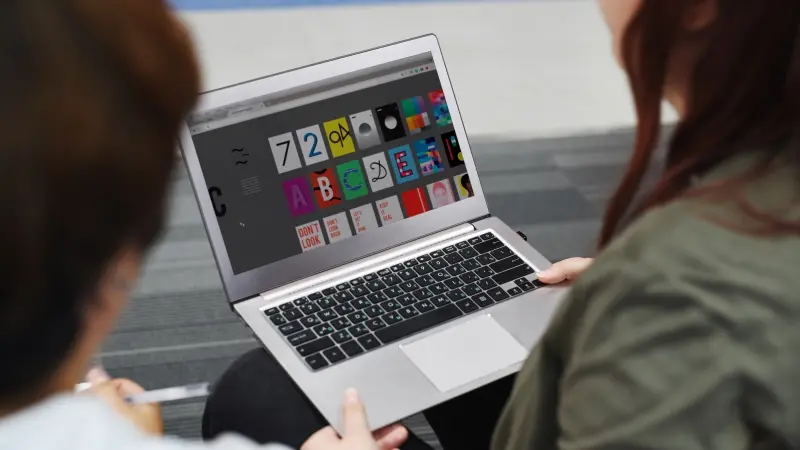Discover Fuchsia OS, Google’s next-generation operating system, designed to unify devices and reshape the future of technology.
Google has been a dominant force in technology, thanks to its highly successful Android and Chrome OS platforms.
However, a lesser-known project, Fuchsia OS, is emerging as the company’s potential next big leap in operating systems.
Also Read
First revealed in 2016, Fuchsia OS is a modern, open-source operating system that aims to provide a seamless experience across a wide range of devices.
Unlike Android and Chrome OS, Fuchsia is built from the ground up to overcome limitations of older operating systems and adapt to the growing demands of a connected world.
This article delves into what Fuchsia OS is, its key features, and why it could be the future of Google’s operating systems.
What is Fuchsia OS?
Fuchsia OS is a next-generation operating system developed by Google. Unlike Android, which is based on the Linux kernel, Fuchsia uses a new microkernel called Zircon.
This makes it distinct from Google’s existing platforms and gives it greater flexibility to run across a variety of devices, from smartphones and tablets to laptops, smart home devices, and even embedded systems.
Fuchsia OS is designed to provide a unified user experience across all devices, eliminating the fragmentation often seen in current ecosystems.
By creating a single operating system that can seamlessly adapt to different hardware configurations, Google aims to simplify development for app creators and improve the user experience for consumers.
Key Features of Fuchsia OS
Fuchsia OS introduces several innovative features that set it apart from traditional operating systems. Here are the key highlights:
1. Microkernel Architecture
Fuchsia OS is powered by Zircon, a microkernel that provides a lightweight and modular foundation for the operating system.
Unlike monolithic kernels, which include all core functions in one large codebase, microkernels handle only essential tasks, such as communication between hardware and software.
This approach enhances performance, security, and scalability, making Fuchsia ideal for a wide range of devices.
2. Cross-Platform Compatibility
One of Fuchsia’s main goals is to create a unified experience across various devices.
By using a modular architecture, Fuchsia can scale from small IoT devices to high-performance computers, ensuring that the same core operating system powers everything seamlessly.
This cross-platform compatibility simplifies app development and reduces the need for developers to create separate versions of their apps for different devices.
3. Focus on Security and Privacy
Fuchsia OS places a strong emphasis on security and privacy. Its microkernel architecture isolates processes, reducing the risk of system-wide vulnerabilities.
Additionally, Fuchsia implements modern security practices such as mandatory encryption, sandboxing, and secure boot to protect user data and prevent unauthorized access.
4. Flutter Framework
Fuchsia uses the Flutter framework for app development, which allows developers to create high-performance, visually appealing applications with a single codebase.
Flutter is already widely used for Android and iOS app development, so developers familiar with it can easily transition to building apps for Fuchsia.
5. Modern Interface and Adaptability
Fuchsia OS is designed with a modern, adaptive user interface called “Armadillo.” The interface focuses on card-based navigation, making it highly intuitive and user-friendly.
Additionally, Fuchsia’s interface can adapt dynamically to different screen sizes and input methods, ensuring a consistent experience across devices.
6. Backward Compatibility
To ensure a smooth transition for users, Fuchsia aims to support existing Android and Chrome OS apps.
By providing backward compatibility, Fuchsia can integrate into the current ecosystem without requiring users to abandon their favorite apps and services.
How Does Fuchsia Differ from Android and Chrome OS?
While Android and Chrome OS have been successful in their respective domains, they are not without limitations.
Fuchsia OS addresses many of these challenges and offers significant improvements:
1. Kernel Differences
Android: Built on the Linux kernel, Android has inherent limitations related to scalability and performance, particularly for IoT devices and embedded systems.
Fuchsia: Uses the Zircon microkernel, which is more lightweight and modular, making it better suited for modern, connected devices.
2. Unified Platform
Android and Chrome OS: Designed for specific device categories—Android for smartphones and tablets, and Chrome OS for laptops and desktops.
Fuchsia: Aims to unify all devices under a single operating system, eliminating fragmentation and enabling seamless integration.
3. Performance
Android: Can experience performance issues on low-powered devices due to its reliance on a monolithic kernel and resource-intensive processes.
Fuchsia: Optimized for efficiency and performance, particularly on low-powered and IoT devices.
4. Privacy and Security
Android: While Android has improved its security features over the years, it is still vulnerable to malware and other security risks due to its open nature and reliance on third-party apps.
Fuchsia: Built with security and privacy as core principles, offering advanced protection against vulnerabilities.
Why is Fuchsia Important for Google’s Future?
Fuchsia OS represents Google’s vision for the next generation of computing. Here’s why it could play a critical role in shaping the company’s future:
1. Addressing Fragmentation
One of the biggest challenges with Android is fragmentation, where different devices run different versions of the operating system, leading to inconsistent user experiences.
Fuchsia aims to create a unified ecosystem, reducing fragmentation and providing a seamless experience across all devices.
2. Preparing for the IoT Revolution
As the Internet of Things (IoT) continues to grow, the need for an operating system that can scale across various connected devices becomes increasingly important.
Fuchsia’s modular and lightweight architecture makes it ideal for IoT applications, positioning Google as a leader in this space.
3. Enhanced Developer Ecosystem
By using the Flutter framework and offering backward compatibility with Android and Chrome OS, Fuchsia simplifies app development and encourages developers to create for the platform.
This ensures a robust ecosystem of apps and services from day one.
4. Focus on Privacy
With growing concerns about data privacy, Fuchsia’s focus on secure and privacy-centric features aligns with consumer demands.
This approach could help Google regain trust in its handling of user data.
5. Future-Proofing
Fuchsia is designed to adapt to evolving technologies and user needs, ensuring its relevance for decades to come. By building a flexible and scalable platform, Google is future-proofing its operating system strategy.
Challenges and Adoption
While Fuchsia has immense potential, it also faces several challenges:
1. Adoption Resistance
Convincing users and manufacturers to switch to a new operating system can be challenging, especially when Android and Chrome OS are already well-established.
2. Competition
Fuchsia will need to compete with other operating systems, such as iOS, Windows, and even Android itself. Gaining market share in a competitive landscape requires a clear value proposition.
3. Ecosystem Development
For Fuchsia to succeed, it needs a robust ecosystem of apps and services. Google will need to invest heavily in encouraging developers to create apps for the platform.
Fuchsia OS is an ambitious project that has the potential to revolutionize the way operating systems function.
By addressing the limitations of Android and Chrome OS, Fuchsia aims to create a unified, secure, and scalable platform that can power a wide range of devices.
While challenges remain in terms of adoption and competition, Fuchsia represents Google’s vision for a connected and seamless future.
Whether it replaces existing platforms or works alongside them, Fuchsia is poised to play a pivotal role in shaping the next era of technology.














